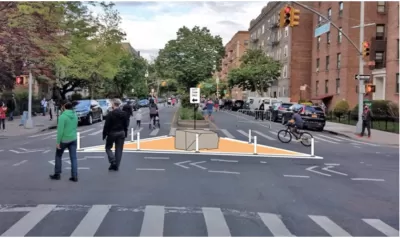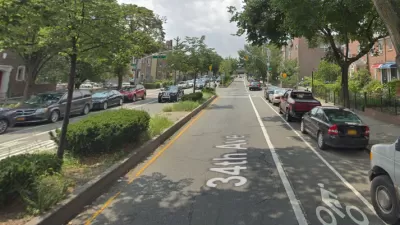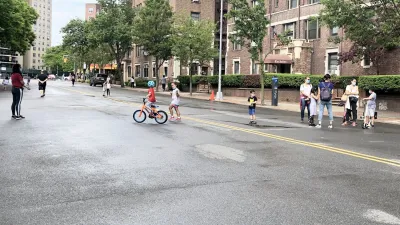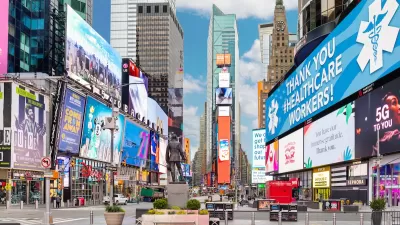An analysis of New York's 34th Avenue shows substantial reductions in crashes and injuries, strengthening the body of evidence supporting car-free streets.

A new analysis from Streetsblog shows significant improvements in pedestrian safety on car-free streets, reports Gersh Kuntzman.
The study used data from New York City's 34th Avenue open street to compare the number of reported crashes and injuries during open streets hours (8am to 8pm), finding a sharp reduction in both. The street also saw fewer crashes and injuries during non-open streets hours, when drivers seemed more likely to avoid the street or drive more carefully due to the daytime restrictions.
Open streets advocates point to this evidence as proof that permanently banning cars from roadways could even further improve pedestrian safety. As activist Luz Maria Mercado put it, "If these are the safety results we’ve gotten from cheap barricades, imagine how safe a 24/7 linear park would be." In addition to making roads safer, open streets initiatives provide much-needed safe, open space in urban communities that frequently lack adequate park space.
But despite early promises from city officials, the proposed plan for a permanent open street on 34th Avenue would not be a true linear park, but rather a combination of car-free blocks and shared streets with diverters intended to slow drivers while maintaining vehicular access.
FULL STORY: Car-Free Streets are Simply Safer, Data Continue to Show

Planetizen Federal Action Tracker
A weekly monitor of how Trump’s orders and actions are impacting planners and planning in America.

The Simple Legislative Tool Transforming Vacant Downtowns
In California, Michigan and Georgia, an easy win is bringing dollars — and delight — back to city centers.

San Francisco's School District Spent $105M To Build Affordable Housing for Teachers — And That's Just the Beginning
SFUSD joins a growing list of school districts using their land holdings to address housing affordability challenges faced by their own employees.

In More Metros Than You’d Think, Suburbs are Now More Expensive Than the City
If you're moving to the burbs to save on square footage, data shows you should think again.

The States Losing Rural Delivery Rooms at an Alarming Pace
In some states, as few as 9% of rural hospitals still deliver babies. As a result, rising pre-term births, no adequate pre-term care and "harrowing" close calls are a growing reality.

The Small South Asian Republic Going all in on EVs
Thanks to one simple policy change less than five years ago, 65% of new cars in this Himalayan country are now electric.
Urban Design for Planners 1: Software Tools
This six-course series explores essential urban design concepts using open source software and equips planners with the tools they need to participate fully in the urban design process.
Planning for Universal Design
Learn the tools for implementing Universal Design in planning regulations.
Smith Gee Studio
City of Charlotte
City of Camden Redevelopment Agency
City of Astoria
Transportation Research & Education Center (TREC) at Portland State University
US High Speed Rail Association
City of Camden Redevelopment Agency
Municipality of Princeton (NJ)





























